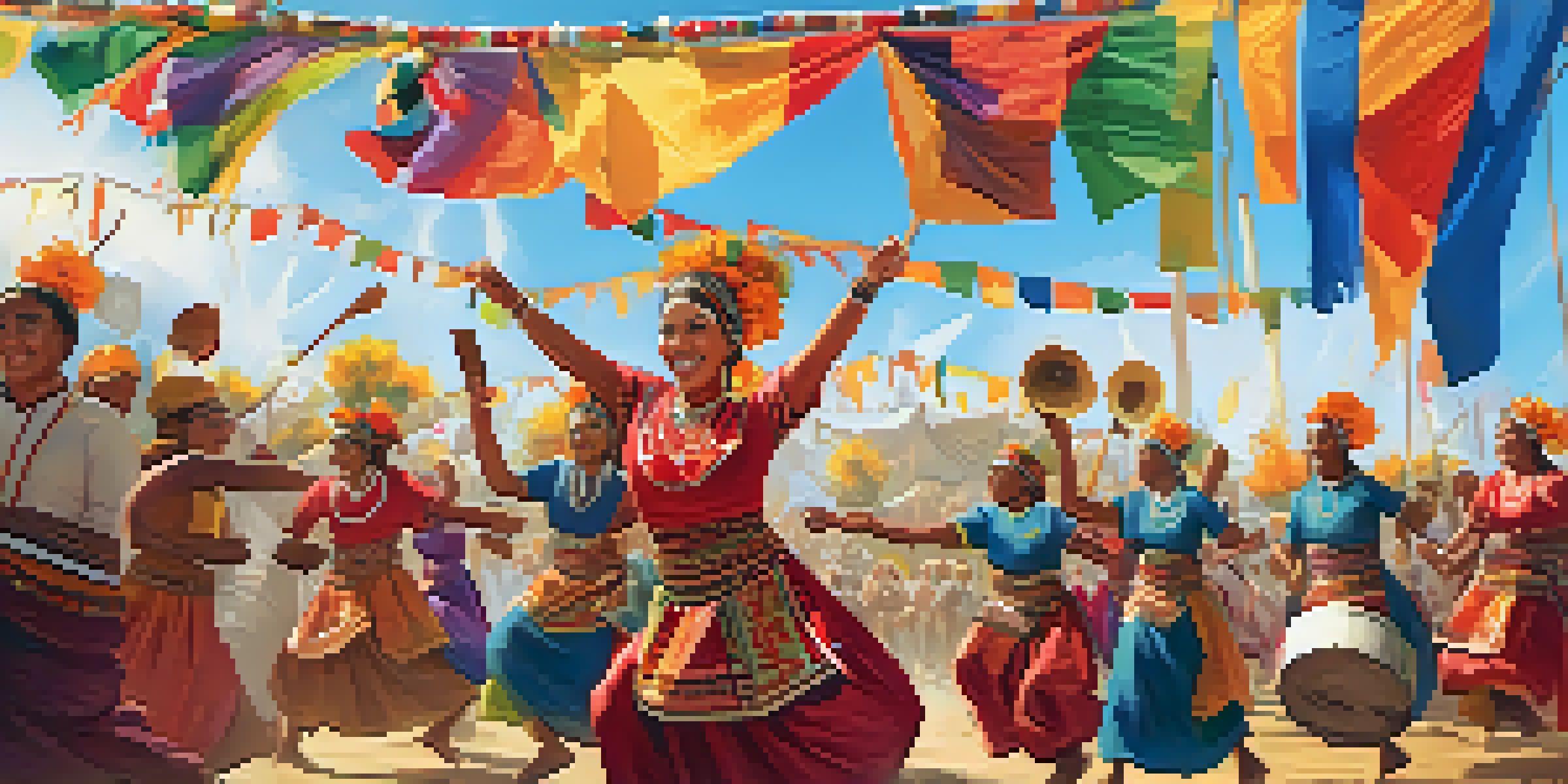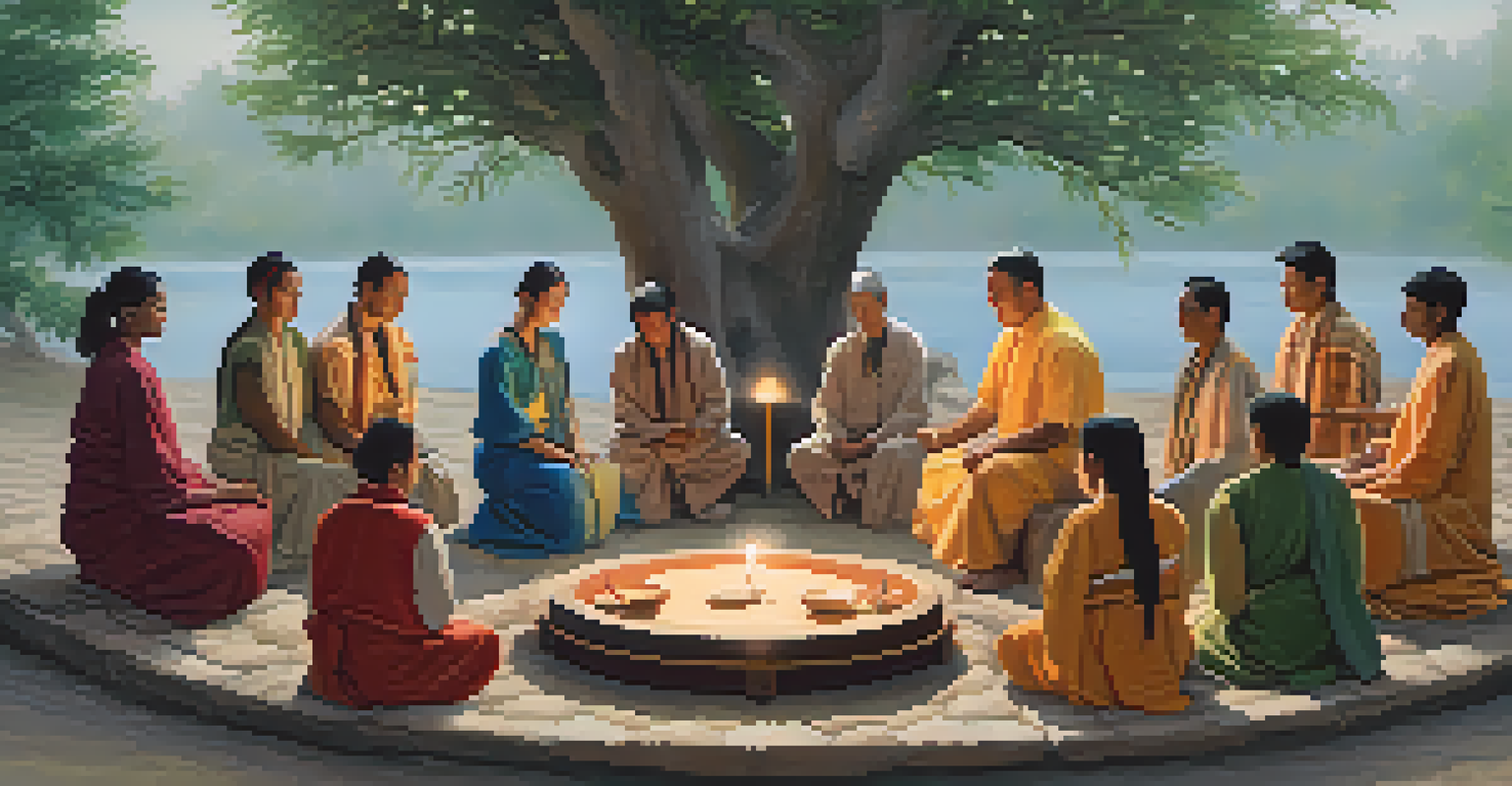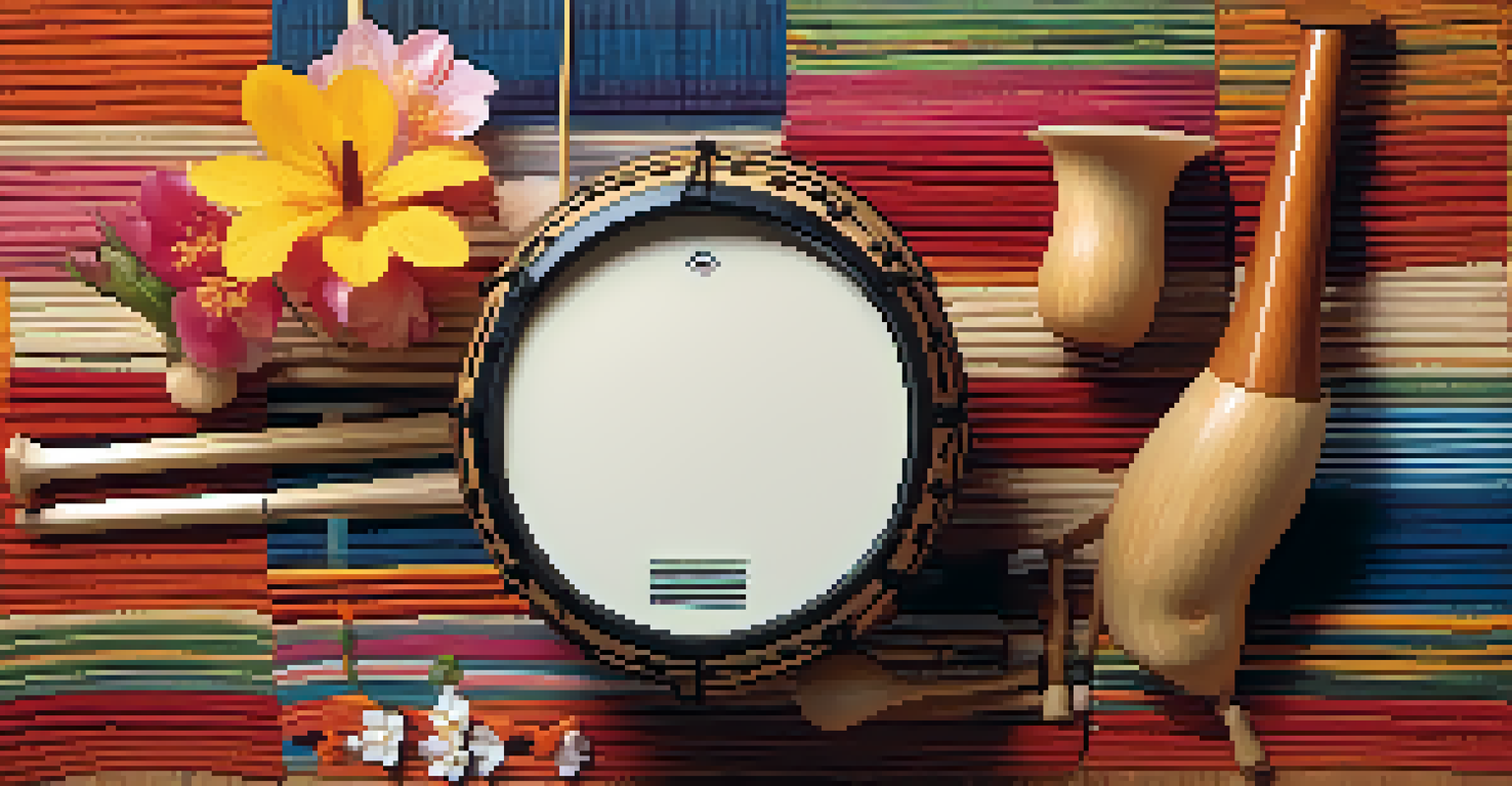Ritual Music: Its Importance in Cultural Ceremonies Worldwide

Understanding Ritual Music and Its Cultural Significance
Ritual music refers to the sounds and melodies that accompany cultural ceremonies, often steeped in tradition. It serves as a powerful medium that helps express communal values and beliefs. Moreover, this music often acts as a bridge, connecting generations and preserving a community's heritage.
Music can change the world because it can change people.
For instance, in many Indigenous cultures, songs are passed down through oral tradition, encapsulating history and teachings. These melodies not only provide entertainment but also play a crucial role in storytelling and cultural identity. Thus, ritual music is not just an art form; it is a vital part of a community's lifeblood.
The importance of ritual music is evident across the globe, from African drumming circles to the haunting chants of Tibetan monks. Each style holds unique meanings and purposes, reflecting the diverse tapestry of human experience. This universality highlights the fundamental role music plays in bringing people together.
The Role of Music in Religious Ceremonies
In many religions, music plays an essential role in ceremonies, enhancing the spiritual experience. From hymns in churches to chants in temples, these musical expressions help facilitate a deeper connection to the divine. They create an atmosphere that encourages reflection, worship, and community bonding.

For example, in Christianity, gospel music can uplift congregations, inspiring a sense of hope and unity. Similarly, in Hindu rituals, the use of mantras and bhajans elevates the spiritual ambiance, marking the significance of devotion. Music, in these contexts, is more than mere sound; it's a vital part of the worship process.
Ritual Music and Cultural Identity
Ritual music serves as a vital link between generations, preserving communal values and enhancing cultural identity.
Additionally, the rhythms and melodies often evoke emotions, allowing participants to feel a sense of belonging and understanding. This emotional connection reinforces the teachings and values of the faith, making the rituals more impactful. Thus, music becomes a conduit for spiritual expression and communal identity.
Cultural Celebrations and Their Musical Expressions
Cultural celebrations around the world showcase the importance of ritual music in expressing identity and heritage. Festivals often feature music that resonates with the community's history, values, and aspirations. From the lively beats of Mardi Gras parades to the solemn sounds of a Day of the Dead celebration, music is central to these events.
Where words fail, music speaks.
Take the example of the Japanese Matsuri festivals, where traditional instruments like taiko drums invigorate the atmosphere. These celebrations not only honor deities but also reinforce community bonds through shared experiences and collective joy. Music acts as a catalyst, transforming ordinary gatherings into extraordinary cultural showcases.
Moreover, these musical expressions often involve dance, further enriching the celebratory experience. The interplay of music and movement creates a dynamic celebration of life, culture, and history. Ultimately, ritual music in cultural celebrations embodies the spirit of the community and the values it holds dear.
Healing and Therapeutic Aspects of Ritual Music
Ritual music also holds therapeutic benefits, often used in healing ceremonies to promote wellness and recovery. Many cultures incorporate music into their healing practices, believing it has the power to restore balance and harmony. This therapeutic aspect can be seen in various traditions, where sound becomes a tool for emotional and physical healing.
For example, in Native American healing rituals, drumming and singing are used to invoke spiritual guidance and physical recovery. This practice not only addresses the individual’s ailments but also fosters a sense of community support. The music creates an environment conducive to healing, where participants feel safe and connected.
Music's Role in Spiritual Ceremonies
In religious contexts, music enhances spiritual experiences, fostering emotional connections and community bonding.
Additionally, modern music therapy draws on these ancient practices, utilizing sound to aid in mental and emotional health. By recognizing the profound impact of music on well-being, we can appreciate its role in ritualistic healing. Thus, ritual music transcends mere tradition, serving as a powerful agent of transformation and recovery.
Music as a Means of Social and Political Expression
Throughout history, ritual music has been used as a vehicle for social and political expression. Artists and communities have often harnessed the power of music to convey messages of resistance, hope, and change. This genre of music, often rooted in cultural rituals, becomes a form of protest, uniting voices against oppression.
For instance, the civil rights movement in the United States saw the emergence of songs that echoed the struggles and aspirations of the community. These anthems not only inspired action but also fostered a shared identity among those fighting for justice. Music, in this context, becomes a rallying cry and a means of solidarity.
Similarly, in many Latin American countries, folk music has been utilized to address injustices and celebrate cultural pride. By embedding messages within traditional rhythms and melodies, communities maintain their cultural identity while pushing for social change. Ritual music thus serves as a powerful tool for raising awareness and mobilizing communities.
The Evolution of Ritual Music in the Modern World
As societies evolve, so does the expression of ritual music, blending traditional and contemporary influences. Modern technology and globalization have facilitated the fusion of different musical styles, creating new forms of ritual music. This evolution reflects changing cultural dynamics while still honoring longstanding traditions.
For instance, contemporary artists often incorporate traditional elements into their music, using it as a platform to share their heritage. This blending not only keeps traditions alive but also introduces them to broader audiences. In this way, ritual music adapts while maintaining its cultural significance.
Evolution of Ritual Music Today
Modern influences and technology have transformed ritual music, blending traditions while keeping cultural significance alive.
Moreover, the rise of digital platforms has allowed cultural ceremonies to reach global audiences, further enriching the experience. Live streams and recordings of rituals have made it possible for people worldwide to participate, albeit virtually. Through this evolution, ritual music continues to play an integral role in connecting individuals across cultures and generations.
Conclusion: The Enduring Power of Ritual Music
In conclusion, ritual music remains a vital aspect of cultural ceremonies worldwide, serving various roles from spiritual expression to social activism. Its ability to connect people to their roots and each other highlights its enduring power. Whether through traditional practices or modern adaptations, music continues to enrich our lives and communities.
As we navigate an increasingly globalized world, the significance of ritual music becomes even more profound. It offers a sense of belonging and identity, reminding us of our shared humanity. By celebrating and preserving these musical traditions, we honor the diverse tapestry of cultural expressions that shape our societies.

Ultimately, ritual music is not just about sound; it’s about connection, healing, and the celebration of life itself. Its importance in cultural ceremonies is a testament to the human spirit and its creativity, ensuring that these rich traditions will continue to resonate for generations to come.